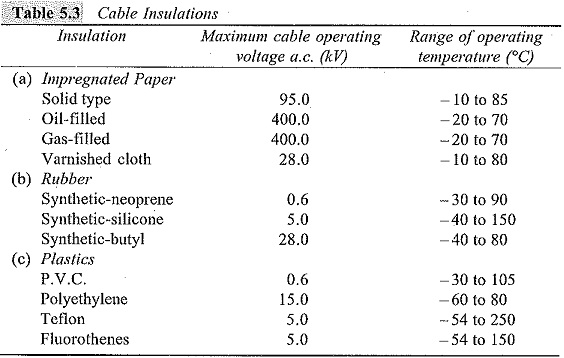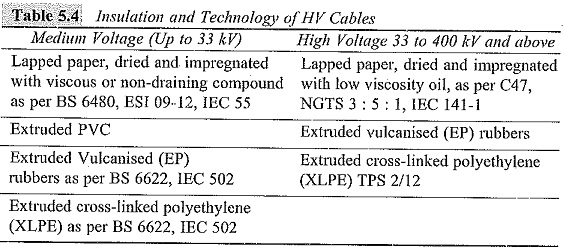Applications of Cables in Engineering Works:
In the recent years natural rubber has been completely replaced by synthetic rubbers and plastics as cable insulation. The physical properties required for wire and cable insulation depend on the type of Applications of Cables in Engineering Works. It should have good elongation and tensile strength and toughness, so that it will withstand handling during installation and service. It should also have low dielectric constant and power factor but high dielectric strength and insulation resistance. Also, during operation, because of overloading, the insulation may be exposed to high temperatures for long periods of time. This necessitates the insulation to have excellent resistance to ageing at high temperatures.
The insulation should also be able to withstand long exposure to sunlight and various chemicals. Applications of Cables in Engineering Works are also laid in rivers and under the sea. For these applications it should have very low water absorption. When cables have to operate at low temperature, the insulation should not become stiff and brittle. The partial discharges in the cable insulation should also be kept as low as possible.
The main types of insulants used in the cable industries are paper, rubber, plastics and compressed gas. Paper insulated lead sheathed cables are still used because of their reliability, high dielectric strength, low dielectric loss, and long life. The most commonly used insulating materials for low and medium voltage (up to 3.3 kV) cables is polyvinylchloride (P.V.C.) Polyethylene and cross-linked polyethylene are also used. P.V.C. is not suitable for high voltage applications because of its high dielectric constant and high loss. It cannot be operated continuously at higher voltages, although it can be used up to 85°C continuous at low voltages.
On the other hand, polyethylene has low dielectric constant and low loss but high dielectric strength. The best material for high voltage and high temperature operation is teflon (P.T.F.E.) which can be used up to 250°C. Silicone rubber has a high degree of heat resistance for continuous operation up to 150°C. It gives rise to very little carbon formation when destroyed by fire, and as such it continues to function even after the fire. Hence it is used for aircraft cables where contamination with aircraft fuel can occur at very high temperatures.
In paper insulated cables the paper is impregnated with oil by the process of mass impregnation using free flowing liquid. Table 5.3 gives the various insulating materials used in cables and the maximum cable operating voltages and temperatures.
High Voltage Cable Technology:
High voltage cables and the insulation technology used for their manufacture are given in Table 5.4. The insulation is mainly paper based and is divided into three broad categories described as follows.
(a) Paper Based Laminated Construction:
The construction of the above insulation of the high voltage cable is done by using paper. Paper provides manufacturing flexibility and it is available in high electrical quality (cellulose paper). A multiple-layer construction has the advantage that a defective layer only marginally weakens the whole system both electrically and mechanically. For the purpose of design, an AC field strength of up to 15 kV/mm or (100 kV lightning impulse) is typical for low viscosity oil impregnated paper. Typical value of dielectric constant is 3.5 and that of dielectric loss factor (tan δ) is 0.0025.
(b) Polymeric Insulation:
Extrusion of a polymer to forth the insulating wall of the Applications of Cables in Engineering Works offers the possibility of high production speed along with the advantages of polymeric materials. Polymers can be selected to have dielectric losses less than 10% of the cellulose paper and the intrinsic dielectric strength as high as 4 times that of oil impregnated paper and thermal conductance 30% higher. The disadvantage of this type of insulation is that a single defect can have a disastrous effect on the dielectric integrity of the whole cable. At voltages of 120 kV and below compounds of ethylene-propylene (EP) rubber are being used. The benefit of this material is that it is water resistant. An alternative to EP rubbers in XLPE.

